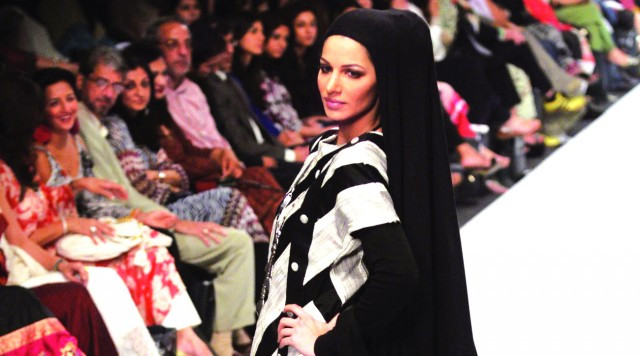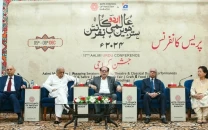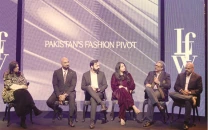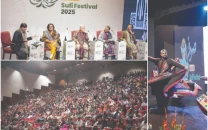Hijab inspires haute couture
French ban on the veil in public places hasn’t stopped designers from using the conservative dress as inspiration.

Hijab inspires haute couture
Fashion designers worldwide are incorporating hijabs and abayas in their collections, using a vibrant colour palette that breaks away from the traditional black, blue and beige colours.
The number of designers who are producing hijabs is on the rise.
Hina Anwar is one such designer. “Style”, she says, “is the Lahori way of living”.
“Lahori women always prefer to dress up in a stylish way wherever they go. They put a lot of effort into their dress everywhere - at school, college, out shopping, wherever they go. A lot of women are choosing to cover up but in a very nice way. They want style, good cuts and good embroidery,” Anwar said.
Libas magazine’s Mehvash Amin told Express 24/7, “I saw a fashion designer catering to this (abayas) at a fashion week, and there are a number of boutiques as well in Lahore which make abayas. The only thing is that Pakistani women absolutely love dressing up and they are not happy with simple black garments. They like rhinestones, a bit of lace, colour and things like that. So I think that’s the trend for hijabwear.”
While designer labels such as Givenchy have produced abayas for couture buyers in the Gulf and the Middle East, Pakistani fashion weeks have seen an increase in designers sowing outerwear. At Fashion Pakistan Week in Karachi this April, the UAE-based designer label Rabis showed a collection with artfully wrapped headscarves and harem pants. Syed Rizwanullah featured a patchwork black-and-white burqa in his collection, which he then said, “was the perfect outfit if you’re having a bad hair day and don’t want to see anyone.”
Earlier this month, the UK’s Independent newspaper coined a term for designers who were making conservative high-street clothes - “Hijabistas” - which they called “a trendy set of up and coming Muslim fashion designers who are doing their bit to forge an indigenous British Islamic identity.” The designers interviewed by the Independent said that their designs were popular with non-Muslims as well.
With additional information by the News Desk
Published in The Express Tribune, July 16th, 2010.


















COMMENTS
Comments are moderated and generally will be posted if they are on-topic and not abusive.
For more information, please see our Comments FAQ